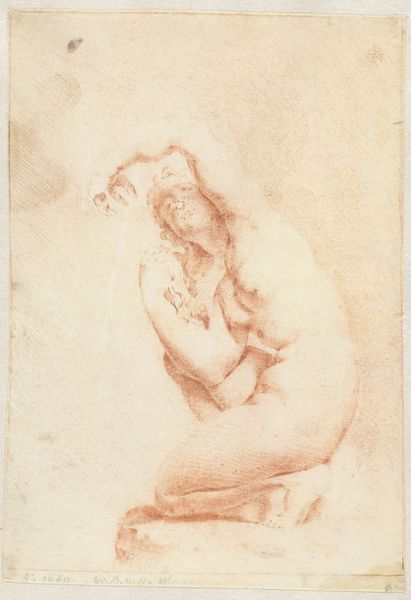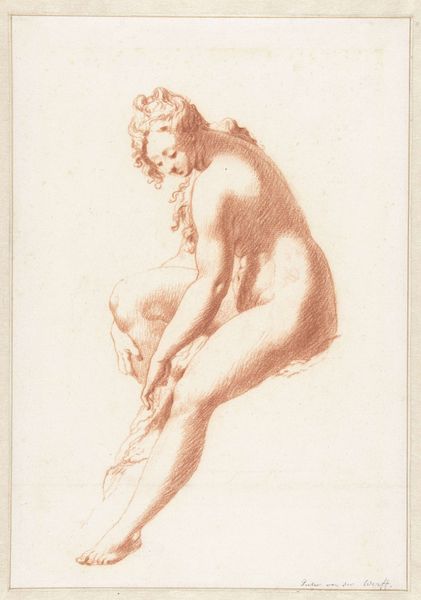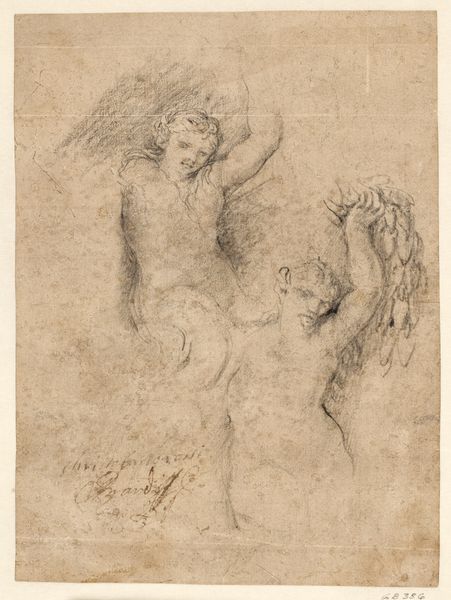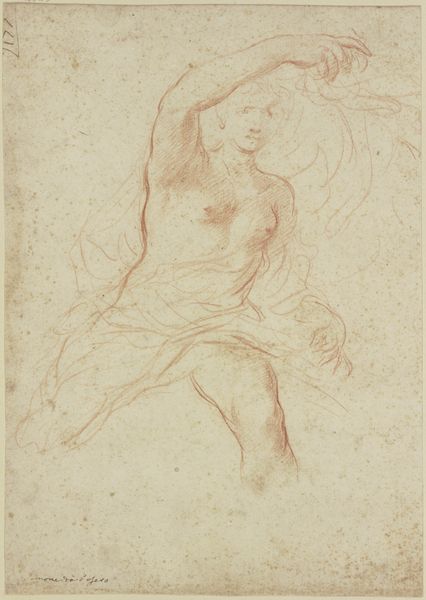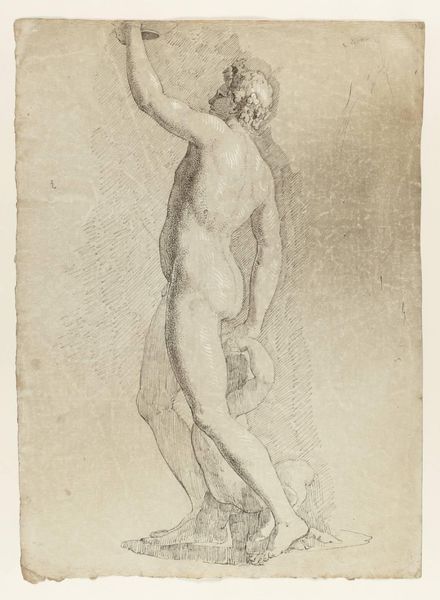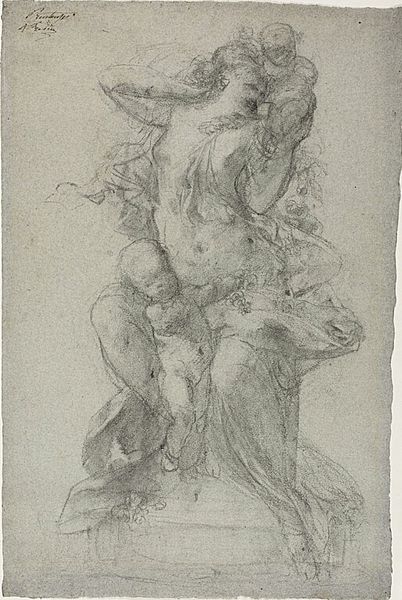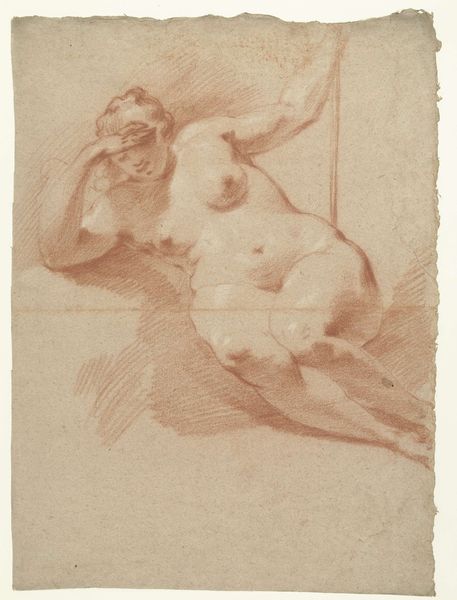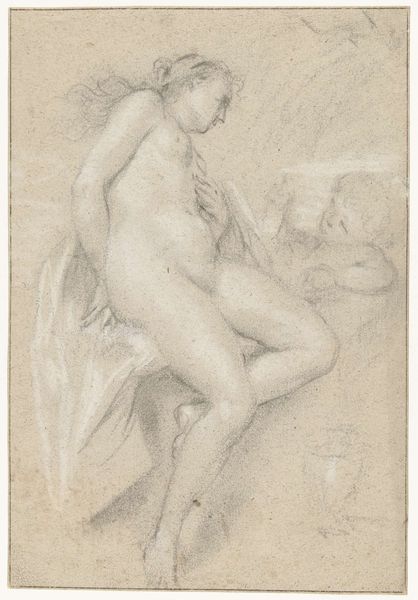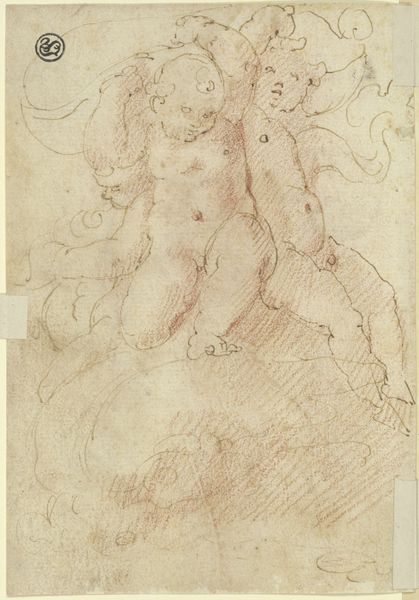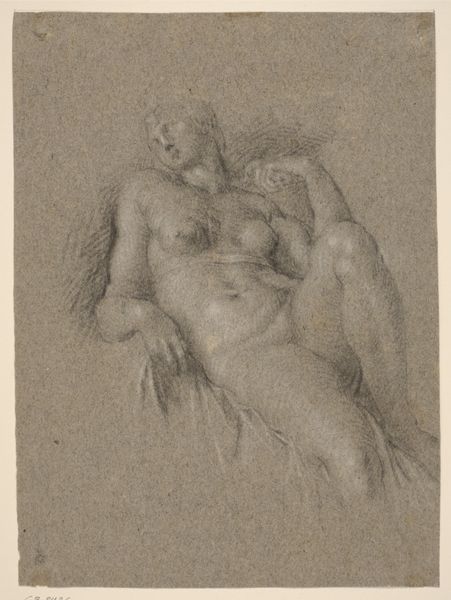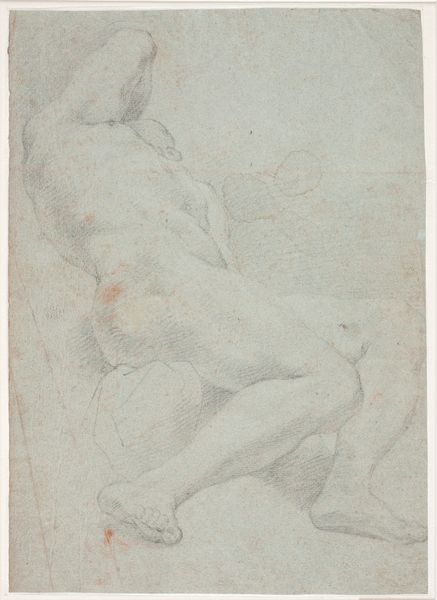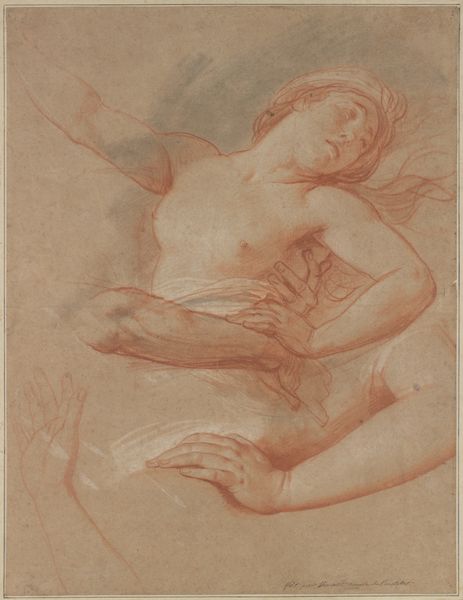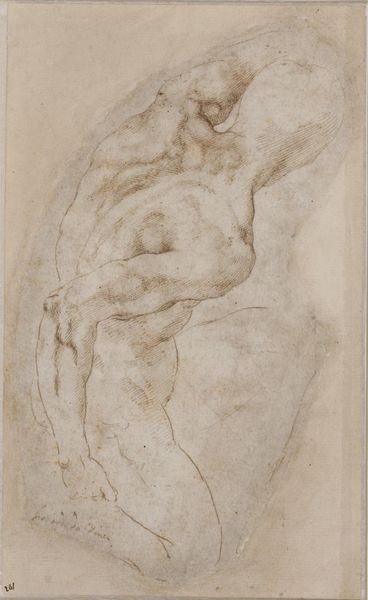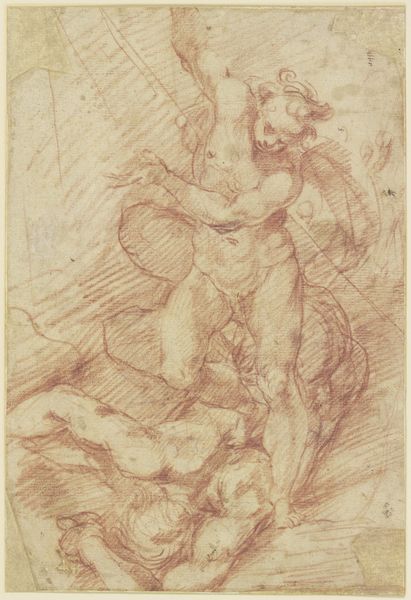
#
light pencil work
#
pencil sketch
#
charcoal drawing
#
possibly oil pastel
#
charcoal art
#
pencil drawing
#
underpainting
#
animal drawing portrait
#
portrait drawing
#
watercolor
Dimensions: height 190 mm, width 133 mm
Copyright: Rijks Museum: Open Domain
Curator: Looking at this artwork from about 1680 titled “Niobide” by the artist Monogrammist WBVH, I am immediately drawn to its vulnerable beauty. Editor: Yes, that’s an excellent observation. I see how the red chalk, especially in such a delicate rendering, speaks to the artist’s skillful use of readily available materials, hinting at the accessibility of art creation. The process itself seems to underscore the accessibility and replicability that reproductive drawings afforded wider audiences to iconic artworks. Curator: It’s interesting that you point out accessibility. At the time, prints and drawings often functioned as critical tools for circulating and promoting artistic ideas, expanding art's social role beyond elite circles. Editor: Precisely. Consider the labor involved—not just WBVH's skill in drafting the figure, but also the economic aspects. This kind of red chalk would have been relatively easy to source, impacting the economics around its creation and potential circulation, therefore also affecting its availability and possibly social utility for the art public of the day. Curator: You make an astute point about the materials’ connection to its social circulation. Mythological scenes, particularly those showcasing raw human emotions like Niobe’s legendary grief, acted as moral lessons for the public, frequently reinterpreted by diverse cultural narratives across social strata. Editor: Definitely, and the starkness of the medium adds another layer. There’s an interesting rawness about chalk, which is quite telling in how this reproduction would engage various workshop participants or art enthusiasts of that era through materiality itself. Curator: Seeing the work through that lens changes how I perceive the politics of its imagery, underscoring its relevance not just to art history, but social discourse during that period. Editor: I agree, understanding that process informs not just how, but who could engage in the art world. Curator: It gives you much to consider; an emotionally evocative, historically charged drawing that still feels strangely intimate. Editor: Exactly—the convergence of material, myth, and mode of dissemination makes this so compelling, even now.
Comments
No comments
Be the first to comment and join the conversation on the ultimate creative platform.
